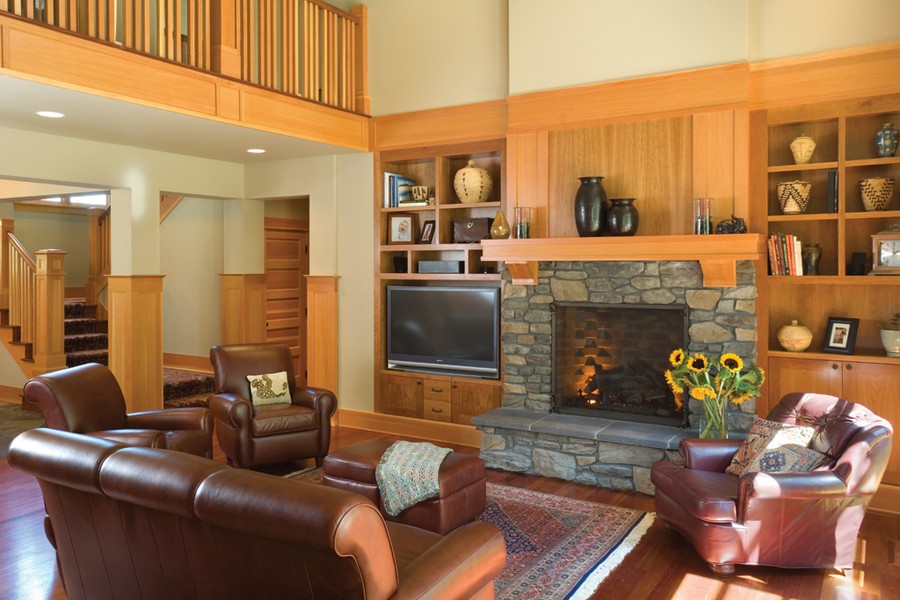Bringing the Arts & Crafts Style into Your Home Plan
All Categories
About Our Plans Building a Home Building Your Home Green Building Help and Support Hobbies & Recreation Home Building Tips and Information Home Design Home Exterior & Framing Homepage Articles House Plan of the Week How We Work Ideas and Inspiration Industry News Infographics Information & Resources Inspired Spaces Interior Design Kitchens Mascord News Modified Home Designs Outdoor Living Personal Stories Plan Support Products and Services Real Estate Remodeling & Renovating Showstoppers
The Arts and Crafts style, popular between 1860 and 1910, was a rejection of stuffy, ornate Victorian design. Arts and Crafts innovators like William Morris turned away from the byzantine florals, formal sitting rooms, and mass-produced objects of the Victorian styling of the day. Instead, Arts and Crafts designers favored clean lines, natural motifs, and casual shared spaces. The burgeoning Industrial Revolution also influenced Arts and Crafts advocates, who preferred handcrafted goods to the factory-made products that were newly available to consumers. This century-old design approach still resonates with modern designers, not only for its simple, calming beauty, but also because it values craftsmanship over trendiness. Many of today’s homeowners, seeking simplicity and de-cluttering, would agree with Morris’ advice to “Have nothing in your houses which you do not know to be useful or believe to be beautiful.” Read on to learn how to add a touch of Arts and Crafts style to your home plans.
How to Incorporate Arts and Crafts Styling into Home Plans
Plan your Arts and Crafts styling according to your budget, your home, and your own personal style. Whether you’re curious about what elements to look for in Craftsman home plans (the architectural product of the Arts and Crafts movement), or you’d like to transform your current abode into an expression of Arts and Crafts style, chances are you’ll find a few good ideas in our list below.
Add stained glass. Handmade stained glass windows were popular among Arts and Crafts designers. This could inspire a homeowner to replace a window with a stained glass design or hang a stained glass piece in-between two rooms, to act as a divider. One final (potentially more affordable) choice: peel-and-stick stained glass window appliqués.
Let natural wood shine. Arts and Crafts designers looked for ways to bring the beauty of the natural world indoors. As such, wood flooring, paneling, and built-ins are common in Craftsman house plans. In general, the wood should remain unpainted. Stains can help accentuate the natural variations in the timber.
Favor natural colors. Neons and pastels are out. Look for earthy tones around your neighborhood and let nature be your inspiration when repainting your home for a Craftsman look.
Add built-in seating and storage. The Arts and Crafts movement emphasized functionality first and foremost. As such, built-in eating nooks, bookcases, and benches were quite popular at the time. If you choose to add a built-in unit, check that its styling is simple, perhaps with a geometric flourish or two. Arts and Crafts lines tended to accent square shapes.
As you scour antique shops and online retailers for Arts and Crafts lighting, furniture, and other home necessities, be sure to favor natural materials and simplicity. These are the hallmarks of an Arts and Crafts home plan.
